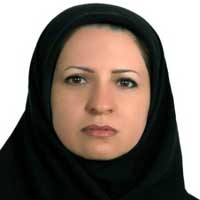Etiologic Causes of Invasive Fungal Sinusitis among Patients of, University Hospitals in Shiraz, Iran
This study aimed to determine the causes of invasive fungal sinusitis in patients of Shiraz University hospitals, Iran.
This cross sectional study was conducted during 18 months (from 21 March 2009 till 22 September 2010) in three Shiraz University Medical Hospitals Thirty six patients with sings of invasive fungal sinusitis were enrolled, and tissue samples were investigated for histopathology, culture and antifungal susceptibility test. The laboratory results with host factor and sinus computed tomography scan were evaluated for classification of patients as proven, probable and possible invasive fungal sinusitis.
Thirty five patients have involved with at least one risk factor (immune compromised disease, diabetes mellitus, or use of immune suppressed drugs). Radiological findings of para sinus invasion or necrosis were present in 20 patients. By histopathology, 21 patients was considered as proven, from these 17 samples had positive growth. The culture etiology agents were 4 Candida, 8 Aspergillus, and 5 Mucor. All positive culture samples were “Match”ed with histopathology findings. Significant association were considered for radiologic finding and histopathology and culture (P < 0.05). From 8 patients with mucormycosis histopathology, 6 suffered from diabetes mellitus. None of the antifungal agents were effective on these three types of infections.
Imaging procedures can be used for diagnosis of infection in early stage of complication in high risk patients.
-
Cross-Sectional Study of Candidemia from Isfahan, Iran: Etiologic Agents, Predisposing Factors, and Antifungal Susceptibility Testing
Maryam Ranjbar Mobarake, Jamileh Nowroozi, , Sayed Nassereddin Mostafavi, Rasoul Mohammadi
Journal of Research in Medical Sciences, Nov 2021 -
Use of restriction fragment length polymorphism to identify Candida species, related to onychomycosis
Rasoul Mohammadi, , Hamid Badali, Mahdi Abastabar, Ahmad Hosseini Safa, Mahboubeh Hadipour, Hajar Yazdani, Farnaz Heshmat
Advanced Biomedical Research, May 2015



